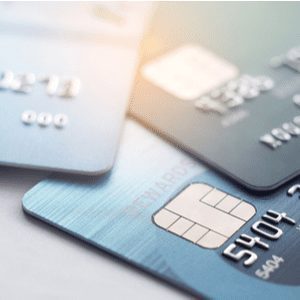 During the pandemic, the use of debit and credit cards has soared. A 2021 MarketWatch analysis found that debit card transaction volumes continue to surge, while growth in credit transactions has remained essentially flat. Always a possible addition to tax-advantaged benefit accounts, debit cards have increasingly become a benefits “must have.”
During the pandemic, the use of debit and credit cards has soared. A 2021 MarketWatch analysis found that debit card transaction volumes continue to surge, while growth in credit transactions has remained essentially flat. Always a possible addition to tax-advantaged benefit accounts, debit cards have increasingly become a benefits “must have.”
Employees Save Time
Offering a debit card option with employee benefit accounts typically increases adoption, usage, and satisfaction percentages. Employees enjoy the convenience of being able to cover their medical expenses without having to first pay out of pocket, then file a claim and wait for reimbursement. Further, benefits card usage may eliminate most instances of needing to submit a claim form or receipts for qualified purchases.
Reduced Processing
Establishments at which benefits debit cards can be used are controlled by Merchant Category Code (MCC) and Inventory Information Approval System (IIAS) restrictions. That’s why employees can’t swipe their benefits card at a gas station or use it at their pharmacy to purchase a chocolate bar. Because of these controls, transactions that do successfully go through usually do not require the submission of receipts, greatly increasing employee convenience, decreasing questions for employers, and reducing claims processing for administrators.
Available for Most Account Types
Benefits debit cards can be linked to most employer-sponsored, tax-advantaged employee benefit accounts. Consider ‘the big three’ of consumer directed healthcare:
Flexible Spending Account (FSA)
With an FSA, employees can use the debit card in-store and online to pay for IRS-approved healthcare expenses. Auto-adjudication is available for many benefits card purchases, such as healthcare and pharmacy co-pays. Some retailers clearly identify FSA-approved over-the-counter (OTC) products, making it easy for employees to select these while shopping.
In addition, if an account holder has a Dependent Care FSA, they may be able to use a benefits card at their childcare provider to pay for those costs as well. (Ask your benefits administrator for details.)
Health Reimbursement Arrangement (HRA)
Some HRA plans can also be linked to a benefits debit card. In such cases, the covered employee can use the card to pay for copays, deductibles, prescriptions and other approved expenses, rather than paying first out of pocket and then filing for reimbursement.
Health Savings Account (HSA)
HSAs can also be linked to a benefits debit card. With HSAs, anyone can fund the account and the card enhances the convenience of the set aside account funds. As with other types of benefit accounts, having a linked card usually increases adoption rate and account usage.
In many cases, multiple benefit accounts can be accessed using a single debit card. This is referred to as a “stacked benefits” debit card. In some cases, a particular purchase is eligible for payment by more than one benefit account, such as a deductible that’s covered by both an HRA and an FSA. If both accounts are accessed through a single, stacked benefit card, the card will know which account to charge the transaction against first.
The need for secure, convenient access to benefit account funds makes including a debit card an easy decision for most employers. If you don’t already have one linked to your tax-advantaged employee benefit accounts, talk to us today about adding it.
Beneliance has provided Arkansas employers with comprehensive third-party employee benefits administration and compliance services since 1996. Please enter your email (above right) to receive notifications about new blog articles as they are published.



